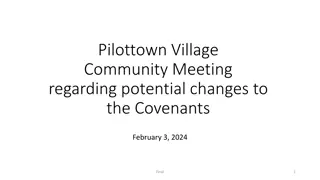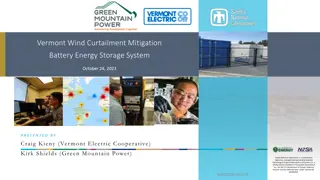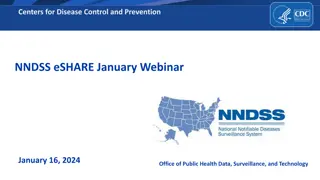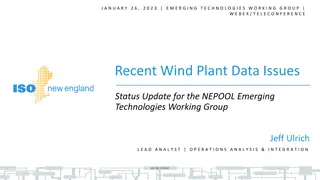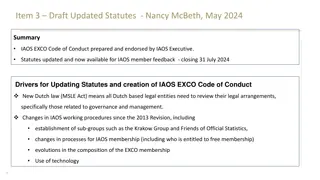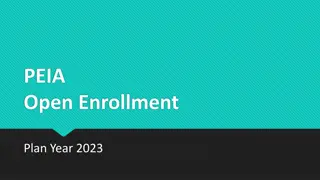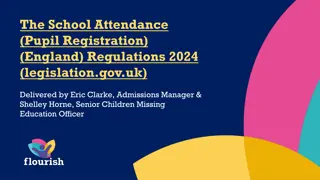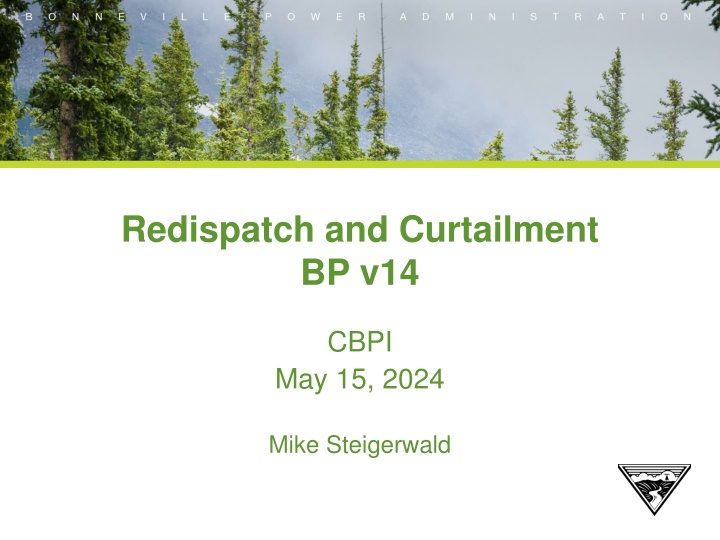
Redispatch and Curtailment BP v14
Learn about the recent updates to the Redispatch and Curtailment Business Practice (BP) v14, focusing on addressing concerns related to curtailing 1:1 paths while maintaining transparency in the process. Explore the evolution of the BP, key takeaways, and the impact on NITS reserved rights for curtailing processes.
Download Presentation

Please find below an Image/Link to download the presentation.
The content on the website is provided AS IS for your information and personal use only. It may not be sold, licensed, or shared on other websites without obtaining consent from the author. If you encounter any issues during the download, it is possible that the publisher has removed the file from their server.
You are allowed to download the files provided on this website for personal or commercial use, subject to the condition that they are used lawfully. All files are the property of their respective owners.
The content on the website is provided AS IS for your information and personal use only. It may not be sold, licensed, or shared on other websites without obtaining consent from the author.
E N D
Presentation Transcript
Redispatch and Curtailment BP v14 CBPI May 15, 2024 Mike Steigerwald
B O N N E V I L L E P O W E R A D M I N I S T R A T I O N Objectives Describe the changes to the Redispatch and Curtailment BP that was posted for customer comment on May 3, 2024. The change is to curtailments on 1:1 paths. 2
B O N N E V I L L E P O W E R A D M I N I S T R A T I O N Key Takeaways Most of the redlines represent curtailment functionality that has been in place for 15 years. These BP changes are being made for transparency of the process. The substantive change is to address a concern about how some NITS tags are handled by curtailments on 1:1 paths. BPA is retaining a reservation-based approach on 1:1 paths rather than adopting a strictly schedules-based procedure. The actual logic involved in calculating the curtailment has not changed. The change is to an input for certain NITS tags. The changes are a result of extensive engagement with customers and represent a compromise that addresses the NITS concerns while retaining the reservation-based approach advocated by some PTP customers. 3
B O N N E V I L L E P O W E R A D M I N I S T R A T I O N History 04/29/22: BP v14 posted for comment to make transparent how curtailments are handled on 1:1 paths. o NITS customers raise concerns that they may be disadvantaged. 07/21/22: BP v14 withdrawn. Evaluation of options begins. 01/18/23: BPA proposes adopting a schedules-based approach. Strong customer pushback from some PTP customers. 05/17/23: After much deliberation, BPA proposes retaining the reservation-based approach, but adjust the input for certain NITS tags to recognize the actual NITS reserved rights (next slide). 06/22/23: BPA decision is made to adopt the proposal. 10/02/23: Contract change is executed with OATI. 05/07/24: Functionality is deployed to Production. The new curtailment logic is disabled pending BP effective date. 4
B O N N E V I L L E P O W E R A D M I N I S T R A T I O N NITS Reserved Rights for Curtailments The primary input to curtailment logic on 1:1 paths is a customer s reserved rights . However, the NT reservation is not always an accurate representation of a NITS customer s reserved rights . The Scheduling Transmission Service BP allows certain NITS tags to be scheduled above the underlying NT reservation (e.g., schedule to their load forecast). Under the current curtailment procedures on 1:1 paths, these tags could be disproportionately cut. As part of this BP update, BPA is not revisiting the policy of allowing NITS customers to schedule above the NT reservation. The BP change is to recognize that the reserved rights for NITS is the higher of the NT reservation or the NT schedule. 5
B O N N E V I L L E P O W E R A D M I N I S T R A T I O N Example Current Curtailments on 1:1 Paths NT Customer 1 has scheduled 25MW more than their underlying reservation. This is allowed. As a result, NT Customer 1 is curtailed disproportionately. Initial Operating Limit Initial Flow 400 355 Reduced Operating Limit Curtailment Relief Needed 300 55 Situation Starting Step 1 Set TSR Reliability Limit 75 75 75 75 300 Step 2 Step 3 Step 4 Reduce Tags to TSR Limit 75 50 75 75 275 Proposed Tag Curtail 25 0 50 5 80 TSR MW Tag MW Set Rsrvd Calculate Uplift Curtail Tags Resulting Flow % Customer Curtailed PTP 1 PTP 2 NT 1 NT 2 Totals 100 100 100 100 400 100 50 125 80 355 100 100 100 100 400 7 0 16 2 25 18 0 34 3 56 82 50 91 77 299 18% 0% 28% 4% 6
B O N N E V I L L E P O W E R A D M I N I S T R A T I O N Example New Curtailments on 1:1 Paths The starting Reserved amount for Customer 1 is adjusted to 125MW. The rest of the logic is unchanged. The result is that the NT Customer 1 is curtailed proportionally with PTP Customer 1. Initial Operating Limit Initial Flow 400 355 Reduced Operating Limit Curtailment Relief Needed 300 55 Situation Starting Step 1 Set TSR Reliability Limit 70.6 70.6 88.2 70.6 300 Step 2 Step 3 Step 4 Reduce Tags to TSR Limit 70.6 50 88.2 70.6 279.4 Proosed Tag Curtail 29.4 0 36.8 9.4 75.6 TSR MW Tag MW Set Rsrvd Calculate Uplift Curtail Tags Resulting Flow % Customer Curtailed PTP 1 PTP 2 NT 1 NT 2 Totals 100 100 100 100 400 100 50 125 80 355 100 100 125 100 425 8.0 0.0 10.0 2.6 20.6 21 0 27 7 55 79 50 98 73 300 21% 0% 21% 9% 7
B O N N E V I L L E P O W E R A D M I N I S T R A T I O N Proposed BP Redlines Only the part in blue represent a change from what BPA has been doing for 15 years. The rest of the redlines are to be transparent about the procedure that has been in place for years. 8
B O N N E V I L L E P O W E R A D M I N I S T R A T I O N Next Steps Follow the normal process for BPs. The customer comment period closes June 11, 2024. The date for BPA response to comments is July 11, 2024. If there are no comments, the functionality will be enabled on June 12. If there are comments, the functionality will be enabled no sooner than July 16. 9













